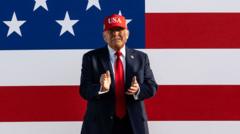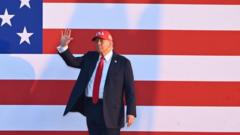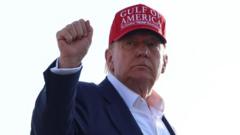In a striking development, President Trump's state visit to Saudi Arabia not only solidified his support among certain demographics but also marked a strategic shift in U.S. foreign policy towards the region.
Trump's Saudi Sojourn: A New Alliance in the Middle East

Trump's Saudi Sojourn: A New Alliance in the Middle East
During his visit, President Trump gained significant popularity while fostering deeper ties with Saudi Arabia.
In a lavish ballroom in Riyadh, anticipation filled the air as guests awaited the arrival of President Trump. Among them was Mohammad Bahareth, a 40-year-old Saudi self-help influencer donned in a “Trump 2028” cap. “He embodies a pragmatic approach to leadership,” Bahareth remarked, his admiration for Trump evident. The influencer, who has amassed a substantial following of 1.5 million on Instagram, claimed that Trump's forthrightness spurred him to embrace a bold persona both online and offline.
During his two-day state visit, Trump delivered a keynote speech at a Saudi-U.S. business forum and publicly lauded Crown Prince Mohammed bin Salman, signaling a renewed commitment to bilateral relations. The President proclaimed the acquisition of hundreds of billions of dollars in U.S. investments, further solidifying economic ties between the two nations.
In an unexpected move, Trump declared an end to American sanctions on Syria, drawing mixed reactions from the attendees and analysts alike. Public sentiment in Saudi Arabia appeared largely in favor of the American leader, with many hailing his unabashed approach to politics and business. While Trump's supporters praised him for his candor and vision, some critics expressed concern over the implications of his policies.
As he wrapped up his visit, Trump's reception in Saudi Arabia indicated a potential reshaping of American influence in the region, even as some factions questioned the long-term ramifications of his decisions on peace and stability.





















